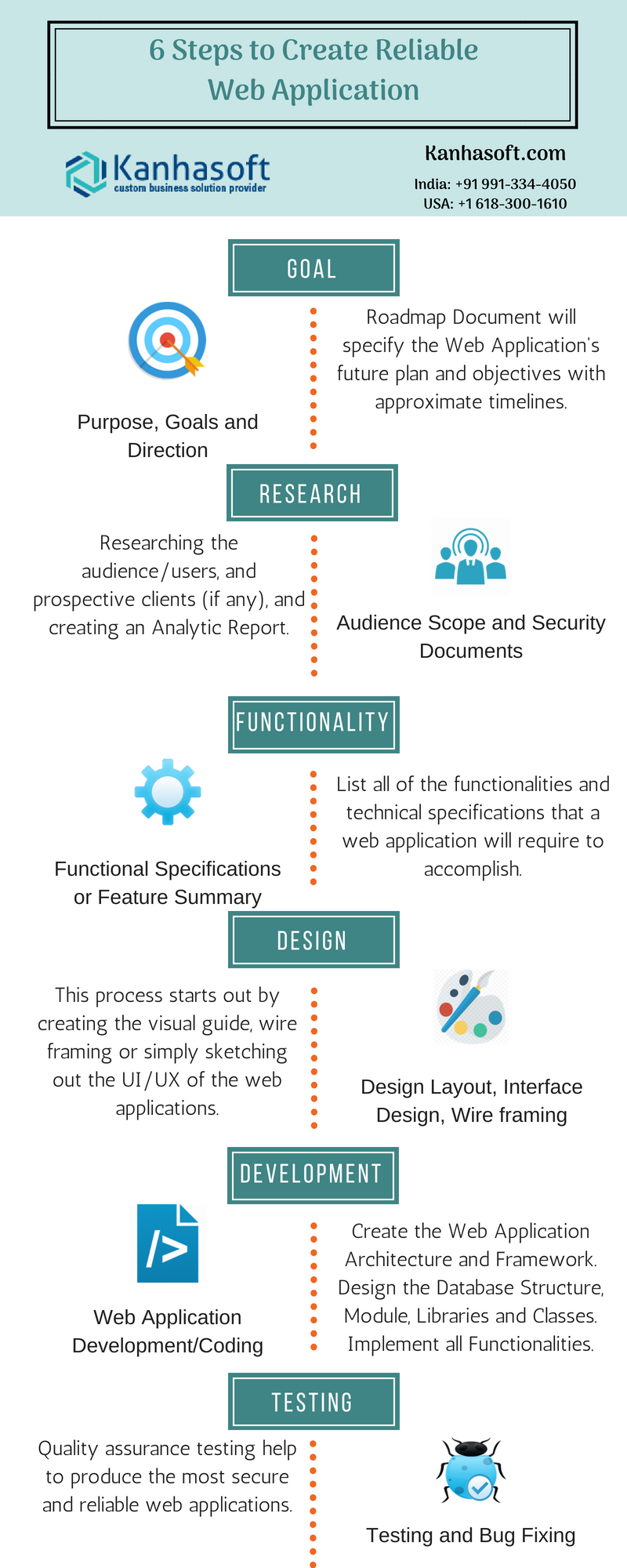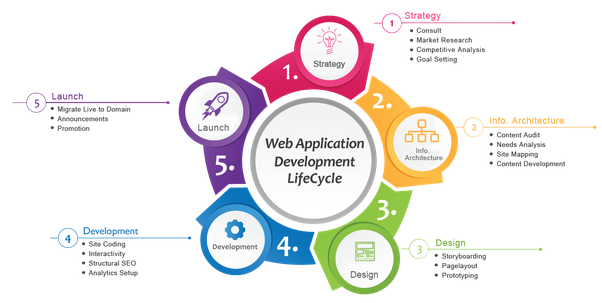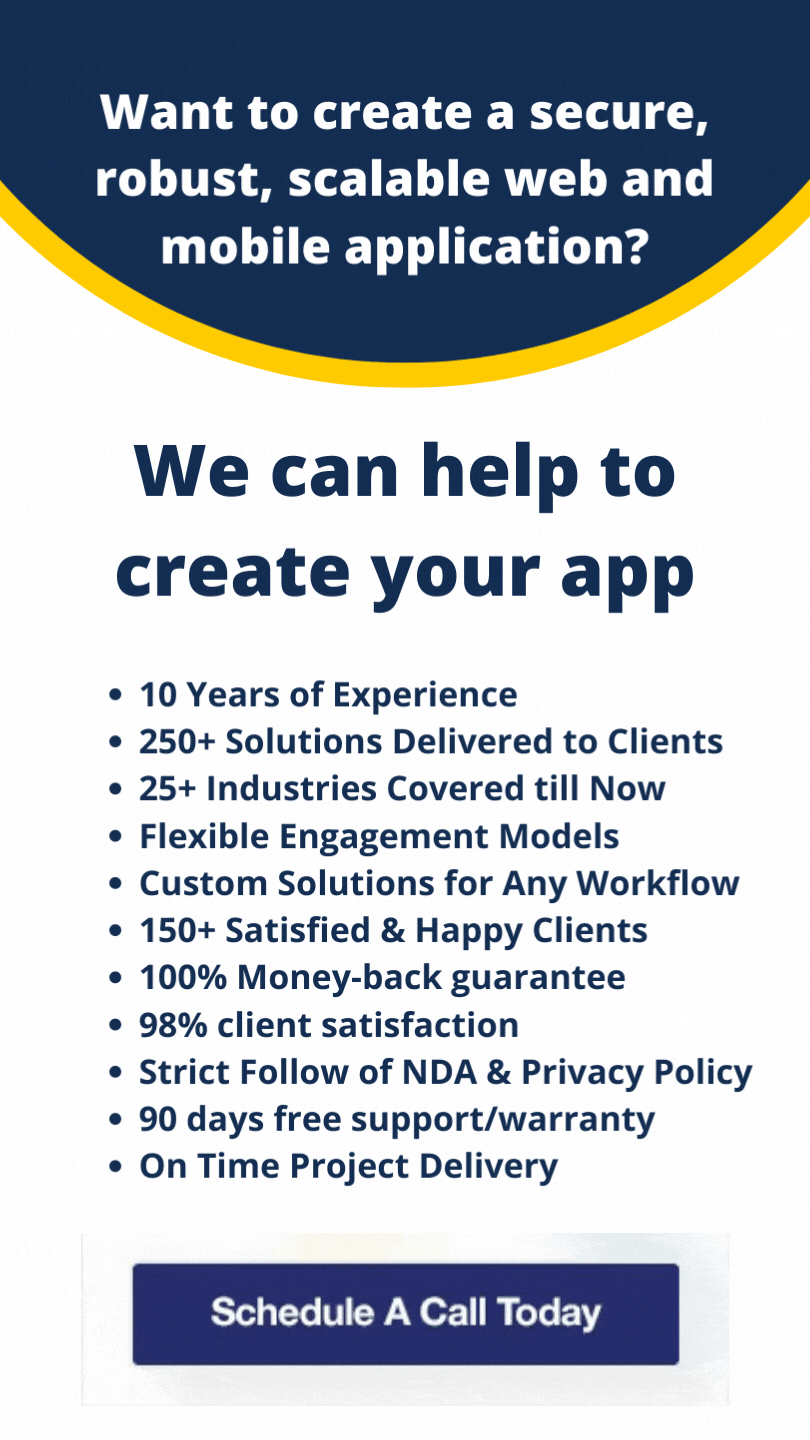In the ever-evolving landscape of technology, web development has emerged as a pivotal field that propels businesses and individuals into the digital realm. With the rapid growth of the internet and the increasing dependence on web applications, the need for a structured and systematic approach to web development has become paramount. This is where the Web Development Life Cycle (WDLC) comes into play, providing a framework that streamlines the process of creating web applications while ensuring efficiency and effectiveness.
Understanding the Web Development Life Cycle
The Web Development Life Cycle is a methodology that outlines a series of interconnected stages, each contributing to the successful creation, deployment, and management of web applications. While there isn’t a one-size-fits-all approach to web development, the WDLC serves as a guiding principle that organizations can adapt to their specific challenges and goals.
1. Gathering Information: Purpose and Main Goals
The first step of the WDLC involves in-depth research and communication. It’s imperative to understand the purpose of the web application and the primary objectives it aims to achieve. Whether it’s an e-commerce platform, a content management system, or a social networking site, grasping the essence of the application enables the development team to align their efforts effectively. This stage also involves identifying the target audience, as different demographics require distinct user experiences and functionalities.
2. Deciding Target Audience and Security
Understanding the target audience is essential for tailoring the user experience to their preferences and needs. Demographics, behavior patterns, and technological proficiency of the users play a crucial role in determining the application’s design, functionality, and overall appeal. Alongside user-centric considerations, security measures are established during this stage. Implementing robust security protocols ensures that sensitive user data remains confidential and the application remains resilient against cyber threats.
3. Listing Functionalities and Technical Specifications
In this phase, the development team creates a comprehensive list of functionalities that the web application needs to offer. These functionalities are derived from the information gathered in the initial stages and are aligned with the application’s purpose and target audience. Concurrently, technical specifications are defined, including the choice of programming languages, frameworks, databases, and other tools that will be employed throughout the development process.
4. Planning: Sitemap and Wireframe Creation
The planning stage involves creating a visual representation of the application’s structure and flow. A sitemap outlines the hierarchical structure of the application, indicating the different pages and how they are linked. Wireframes, on the other hand, provide a skeletal framework of each page’s layout, showcasing the placement of elements and user interface components. These visual tools serve as blueprints that guide the development process and ensure that all stakeholders share a common vision.
5. Coding
The coding phase is where the envisioned web application starts taking tangible form. The development team translates the wireframes and technical specifications into actual code. This is a critical and often time-consuming stage, as the accuracy and efficiency of the codebase determine the application’s functionality and performance. Developers employ programming languages like HTML, CSS, JavaScript, and various backend languages to build the frontend and backend components of the application.
6. Testing, Review, and Launch
Thorough testing is imperative to identify and rectify any bugs, glitches, or inconsistencies in the application. Quality assurance specialists rigorously assess the application’s functionalities, user interfaces, and performance under different conditions. User acceptance testing (UAT) is also conducted to ensure that the application meets user expectations and functions seamlessly. Once testing is complete and all issues are resolved, the web application is ready for deployment. Launching the application requires careful coordination to ensure a smooth transition from the development environment to the live server.

Final Words:
The Web Development Life Cycle serves as a guiding compass for navigating the intricate journey of web application creation. By encapsulating the essential steps from information gathering to launch, it ensures that developers, designers, and stakeholders work harmoniously towards a common goal. While the aforementioned steps provide a structured approach, it’s essential to acknowledge the iterative and adaptable nature of web development. As technology evolves and user preferences shift, the WDLC remains a dynamic framework that empowers developers to craft innovative and user-centric web applications that define the digital landscape.
Frequently Asked Questions (FAQs) – Web Development Life Cycle
Q. What is the Web Development Life Cycle (WDLC)?
A. The Web Development Life Cycle (WDLC) is a structured methodology that outlines the series of steps involved in creating, deploying, and managing web applications. It provides a framework that guides developers, designers, and stakeholders through the process, ensuring efficiency and effectiveness in web application development.
Q. Why is the WDLC important for web application development?
A. The WDLC offers a systematic approach to web development, ensuring that all aspects of the project are considered and aligned with its purpose and goals. It helps in avoiding common pitfalls, streamlining the development process, and ensuring that the end result meets user expectations.
Q. Can the WDLC be customized for different projects?
A. Yes, the WDLC is flexible and can be adapted to suit the specific challenges and goals of different projects. While the core stages remain consistent, the details within each stage can be adjusted to cater to the unique requirements of the web application being developed.
Q. What is the significance of the “Gathering Information” stage?
A. The “Gathering Information” stage is crucial as it lays the foundation for the entire development process. It involves understanding the purpose of the application, identifying the target audience, and setting the main goals. This information guides the subsequent stages and ensures that the development effort is aligned with the application’s intended use.
Q. How does the WDLC address security concerns?
A. The WDLC considers security from the early stages of development. During the “Deciding Target Audience and Security” phase, security measures are established to safeguard sensitive user data and protect the application from potential cyber threats. This proactive approach ensures that security is an integral part of the development process.
Q. What are sitemaps and wireframes, and why are they important?
A. Sitemaps outline the hierarchical structure of the web application, depicting how different pages are interconnected. Wireframes, on the other hand, provide a visual representation of each page’s layout and element placement. These tools are crucial for planning and communication, ensuring that all stakeholders share a common understanding of the application’s design and structure.
Q. How does the coding phase contribute to web application development?
A. The coding phase involves translating the design and functionalities outlined in the previous stages into actual code. Developers use programming languages and tools to build both the frontend and backend components of the application. This stage brings the application to life and determines its functionality and performance.
Q. What role does testing play in the WDLC?
A. Testing is a critical step in the WDLC, occurring during the “Testing, Review, and Launch” phase. Quality assurance specialists rigorously test the application’s functionalities, user interfaces, and performance to identify and rectify any issues. User acceptance testing (UAT) ensures that the application meets user expectations before it’s launched.
Q. How does the WDLC accommodate changes in technology and user preferences?
A. The WDLC acknowledges the dynamic nature of web development. While the core principles remain constant, the framework can adapt to changes in technology and user preferences. This adaptability allows developers to incorporate new technologies and design trends while staying true to the structured approach of the WDLC.
Q. Is the WDLC a one-size-fits-all approach?
A. No, the WDLC is not a one-size-fits-all approach. It provides a structured foundation that can be customized to fit the specific needs of different projects. This flexibility allows organizations to tailor the WDLC to their unique challenges, goals, and requirements.
Q. What is the ultimate goal of following the Web Development Life Cycle?
A. The ultimate goal of following the WDLC is to create well-structured, user-centric, and functional web applications that meet the intended objectives. By adhering to the stages outlined in the WDLC, development teams can ensure that the application is thoroughly planned, developed, tested, and launched, resulting in a successful and effective web presence.





